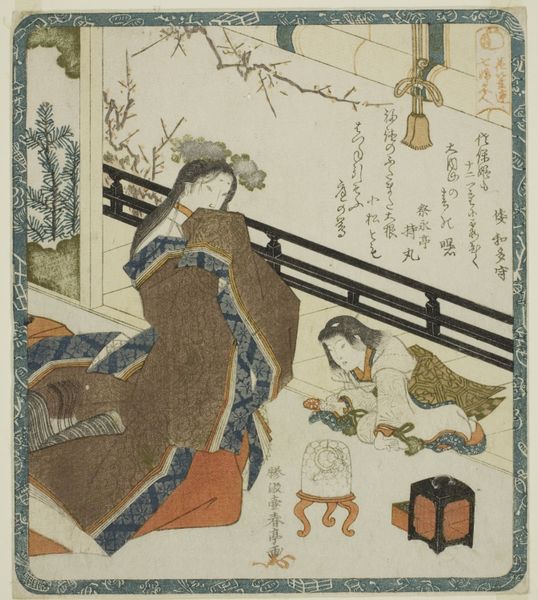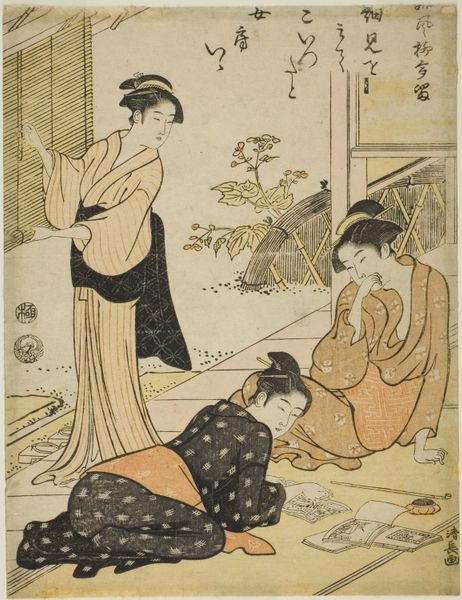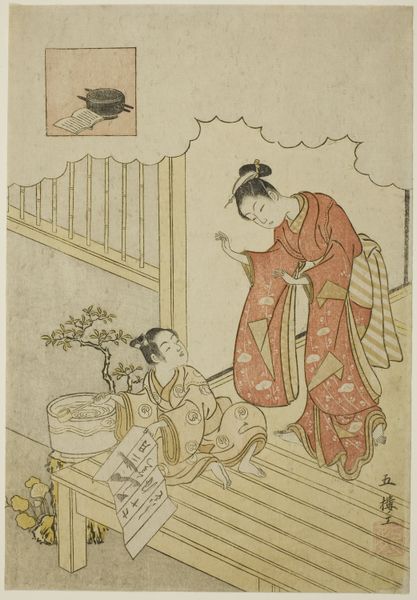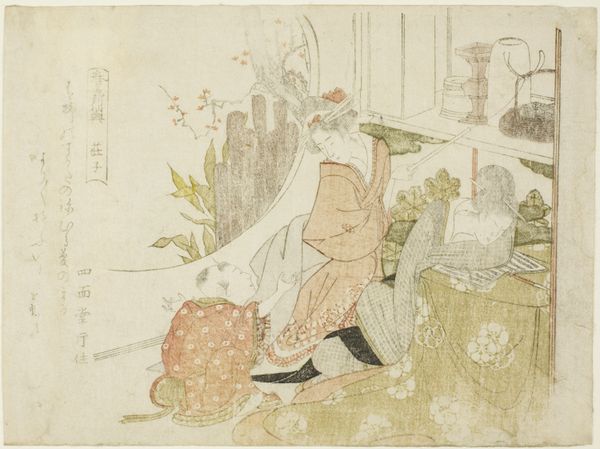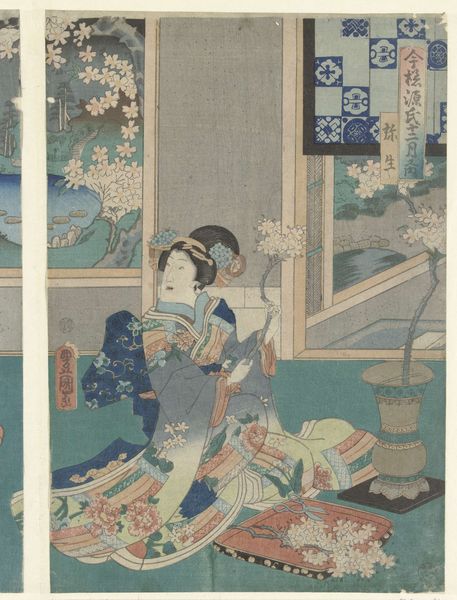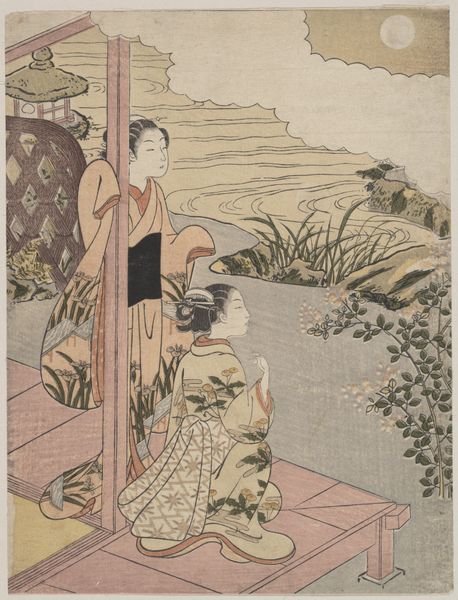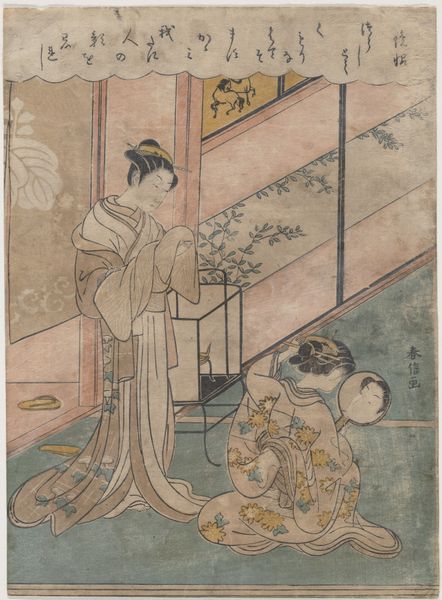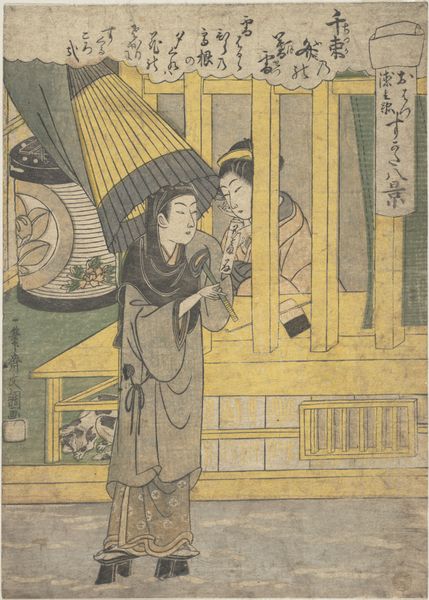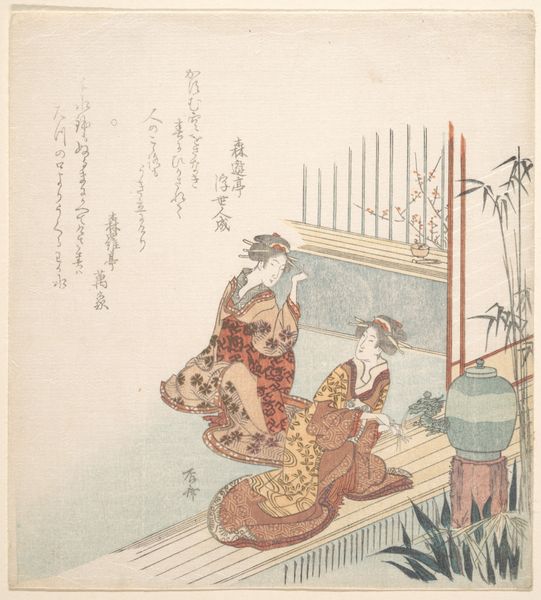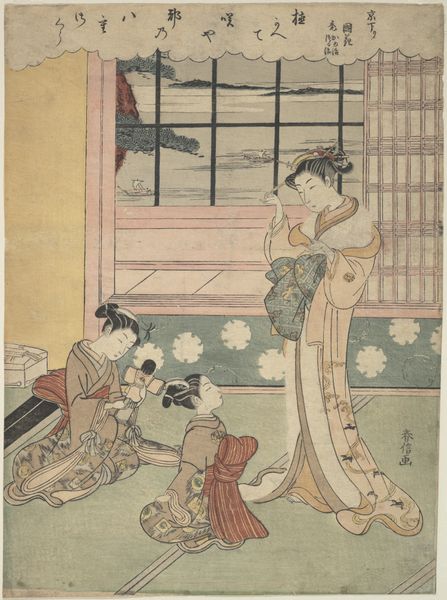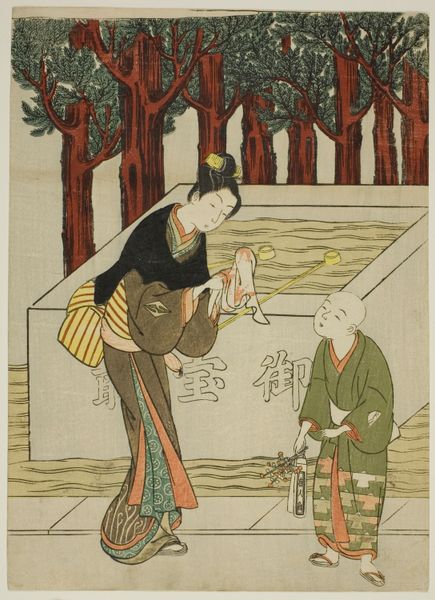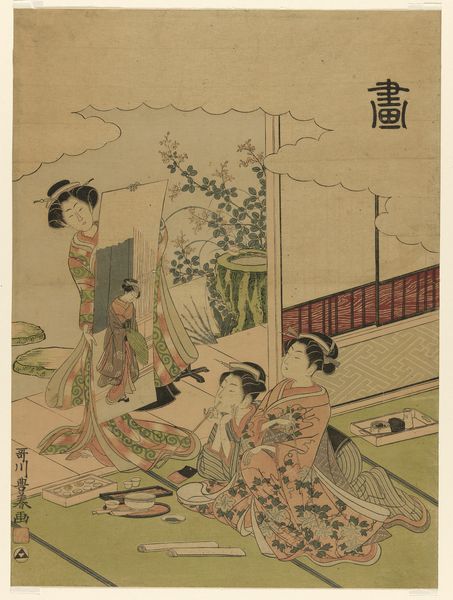
Satsuma no Fukuyorime from the Veritable Records of Emperor Montoku (Satsuma no Fukuyorime, Montoku jitsuroku), from the series "Twenty-four Japanese Paragons of Filial Piety for the Honcho Circle (Honchoren Honcho nijushiko)" c. 1821
0:00
0:00
print, woodblock-print
#
narrative-art
# print
#
asian-art
#
ukiyo-e
#
figuration
#
woodblock-print
#
genre-painting
Dimensions: 21.6 × 19.5 cm
Copyright: Public Domain
Curator: Here, in the Art Institute of Chicago, we have Yashima Gakutei's woodblock print from around 1821. It's called "Satsuma no Fukuyorime from the Veritable Records of Emperor Montoku," part of a series on filial piety. Editor: Immediately, it gives off this quiet domesticity, wouldn't you say? These figures gathered indoors... there's a serenity in the muted colors and the almost fragile lines. Curator: Yes, Gakutei's really captured a tender scene. "Satsuma no Fukuyorime" tells a specific story from Japanese history: about a woman named Fukuyorime from Satsuma province, famed for her devoted care for her parents and grandmother. A tale meant to highlight moral virtue within the family. Editor: You see it so much in ukiyo-e—the emphasis on the everyday, on domestic virtue—which, while visually calming, can also subtly reinforce restrictive roles, particularly for women within the rigid hierarchies of the time. Was Fukuyorime afforded the same rights as her father or the emperor? The print celebrates her, but within defined limits. Curator: Absolutely. And Gakutei, working within the Ukiyo-e tradition, doesn’t necessarily challenge these frameworks directly, but...Look at the way he's captured the light on their faces, their subtle gestures, it evokes empathy. There’s more to it than blind acceptance of prescribed roles, I believe. Editor: Perhaps the power is precisely in its subtextual potential? By depicting this quiet moment of family togetherness, it's silently offering an image of communal care—a value that can extend far beyond the home. The warmth, the detail put into each robe, the almost gossamer feel. How can we refuse such an invitation into these moral debates, and even consider adapting them into something new for a radically new age? Curator: I agree! The artist coaxes an atmosphere that transcends time, opening dialogue, a conversation between our worlds! That's how images change the conversation, even ones seemingly about the "good old days." Editor: Precisely! This isn't a passive endorsement but an active engagement. Thank you, Yashima Gakutei, for leaving such a thoughtful seed from your woodblock for us.
Comments
No comments
Be the first to comment and join the conversation on the ultimate creative platform.
